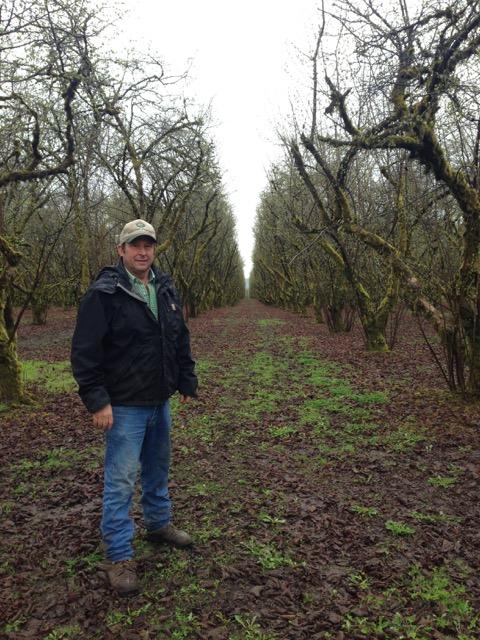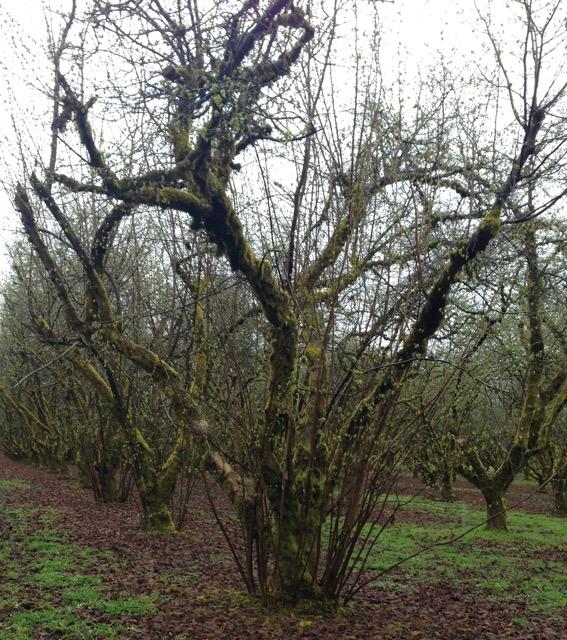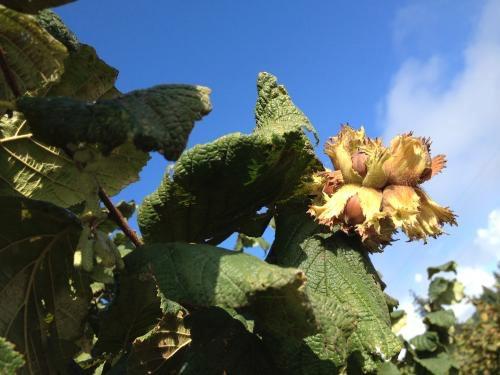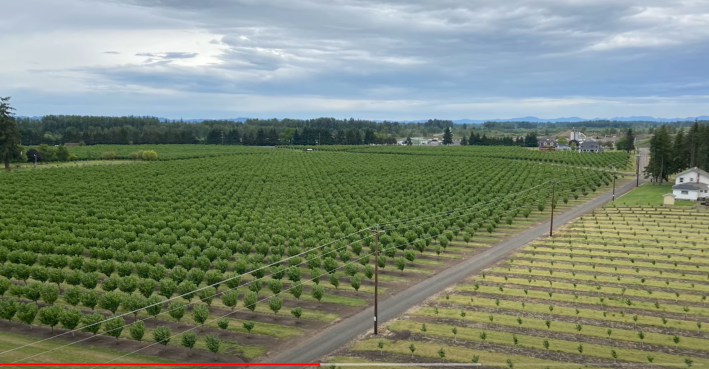Hazelnut Farms Cropping Up All Over
Choate: “It’s gone from roughly 2012 maybe around 30 thousand acres and in 2016 around 60 or more thousand acres, so it has probably more than doubled in four or five years.”
Choate says Oregon produces almost all the hazelnuts in the U.S., but only three to five percent of the global harvest.
Filberts and hazelnuts are the same thing, by the way. They’ve always been known as filberts here, but so as not to confuse overseas buyers, Oregon farmers have tried to lose the “f” word.
Dwayne Bush has 480 acres of hazelnuts in several locations.
Bush: “People always ask me if I’m worried about all the planting going on here, and I’m not near as worried here because we’re such a small portion of the world market, and the demand has been growing four or five percent a year worldwide.”
He says he is concerned about competition from other countries, like Italy. Bush sells to two distributors. They send many of the whole nuts to China and others to Canada to make Nutella and chocolate-covered sweets.
Increased world demand has bumped up prices, prompting local farms to expand, and coaxing some to re-cultivate land where grass seed grew.
Fifteen years ago, local hazelnuts suffered a major setback from Eastern Filbert Blight. Choate says, at that time, most of the trees were the Barcelona variety:
Choate: “It was highly susceptible. And as a result not only were there no new plantings going in, but some old plantings were being torn out. So acreage was probably as a net being lost.”
Dwayne Bush says trees can live with the blight. This year and last, he had to cut about 200 limbs over 80 acres, which he says isn’t bad:
Bush: “I’ve got friends up farther in the valley that have had the blight a lot longer than I have, and they’re cutting maybe half of their trees every year, or a third of their trees and burning. With the price of filberts the way it’s been, or, hazelnuts, it’s worth keeping them alive.”
OSU developed popular, blight-resistant varieties like Yamhill and Jefferson. Bush says not only are the Jeffersons hearty, they’ve made money quickly:
Bush: “This past year, we got pretty close to 2,000 pounds to the acre off of five year old trees. Which is phenomenal.”
Adding new orchards is easier for established growers who have equipment and some current income. For newcomers:
Choate: “Production can start as early as year three, but that doesn’t mean you’re gonna start breaking even on cost any time soon.”
Jeffery Choate sites factors like scale, fickle commodity prices, and weather. The extra rain this year kept Dwayne Bush on his toes:
Bush: “We’re just now fertilizing. We’ve been pruning all winter and scouting for blight. (laughs) We’re still not done. This has been a very wet year.”
Bush says it’s been tough to work when things are soggy, but the trees are fine. So keep your eyes on the new orchards in the valley. Give them a few seasons, and they’ll be producing … like nuts.
Copyright: klcc.org










